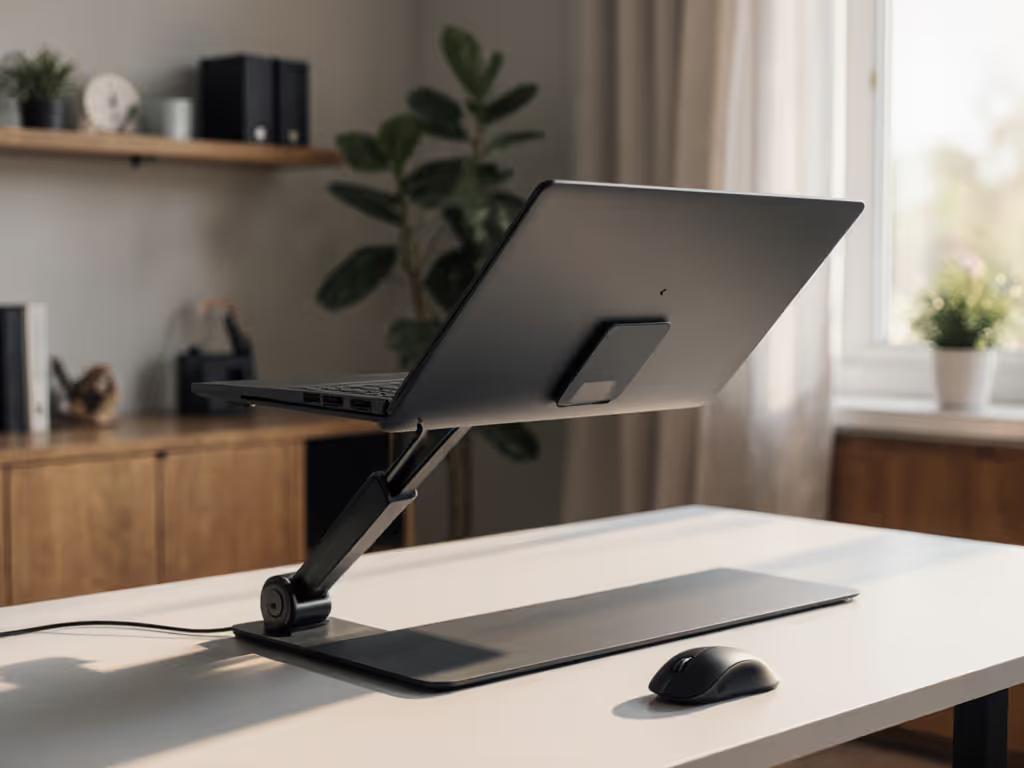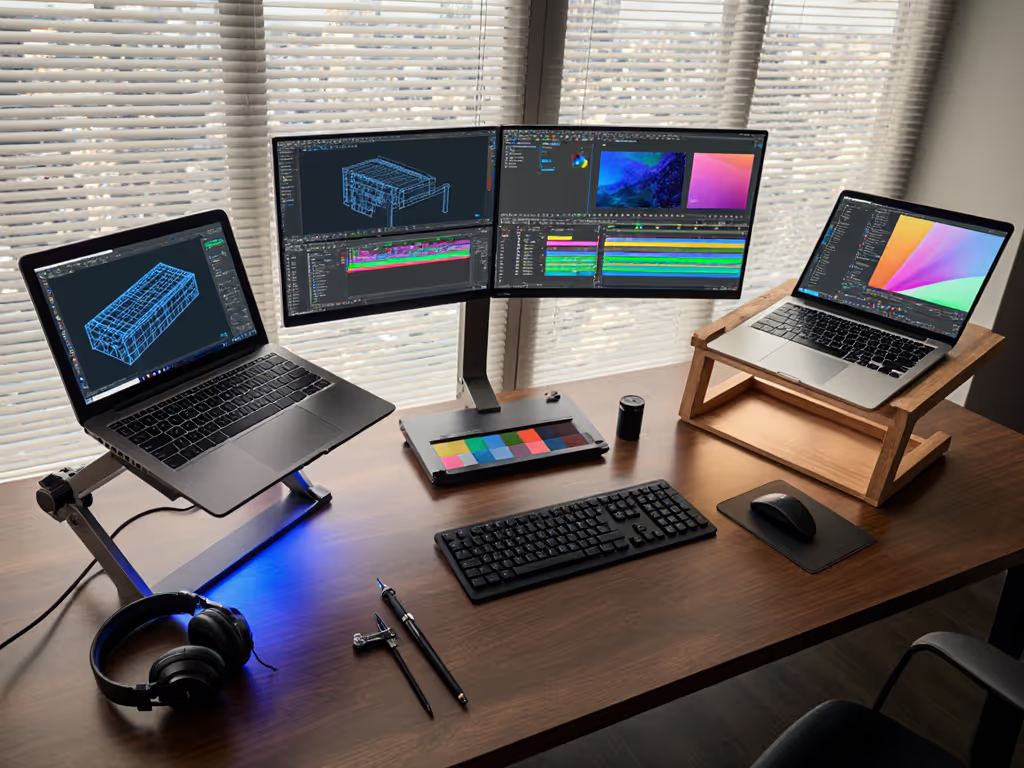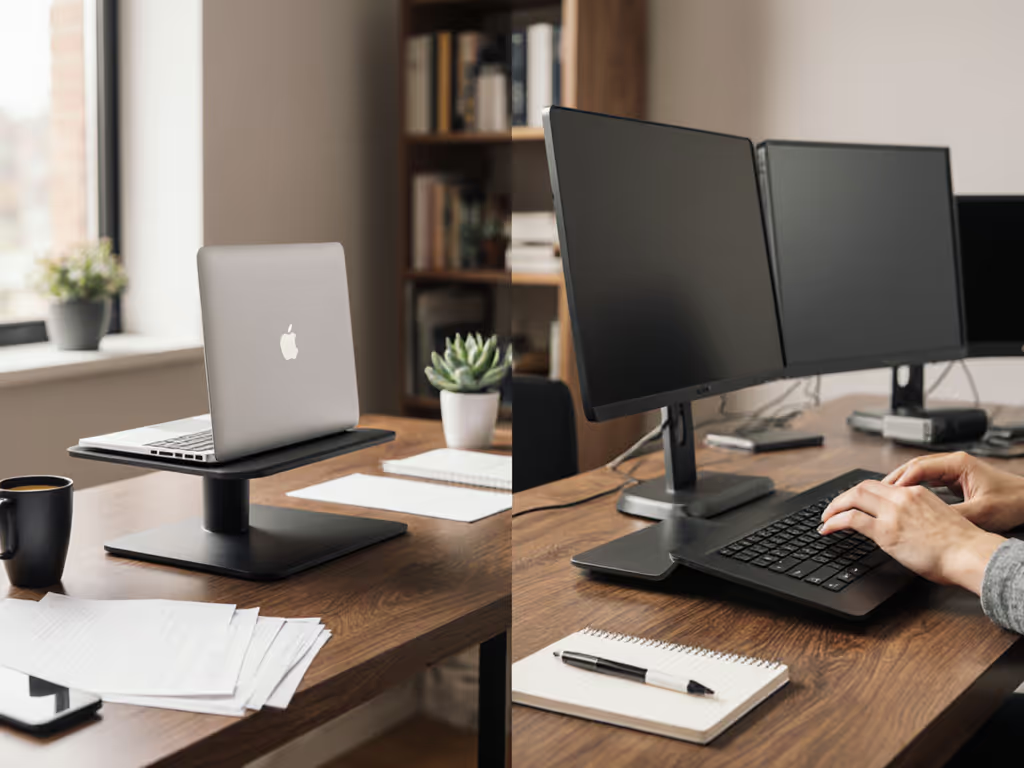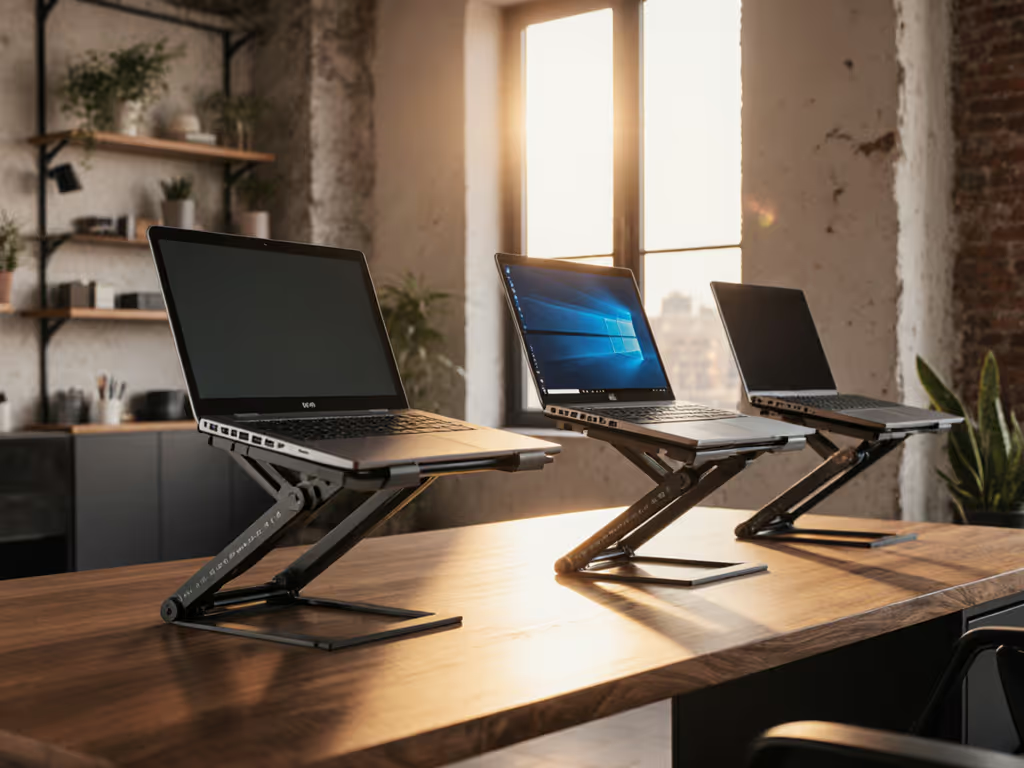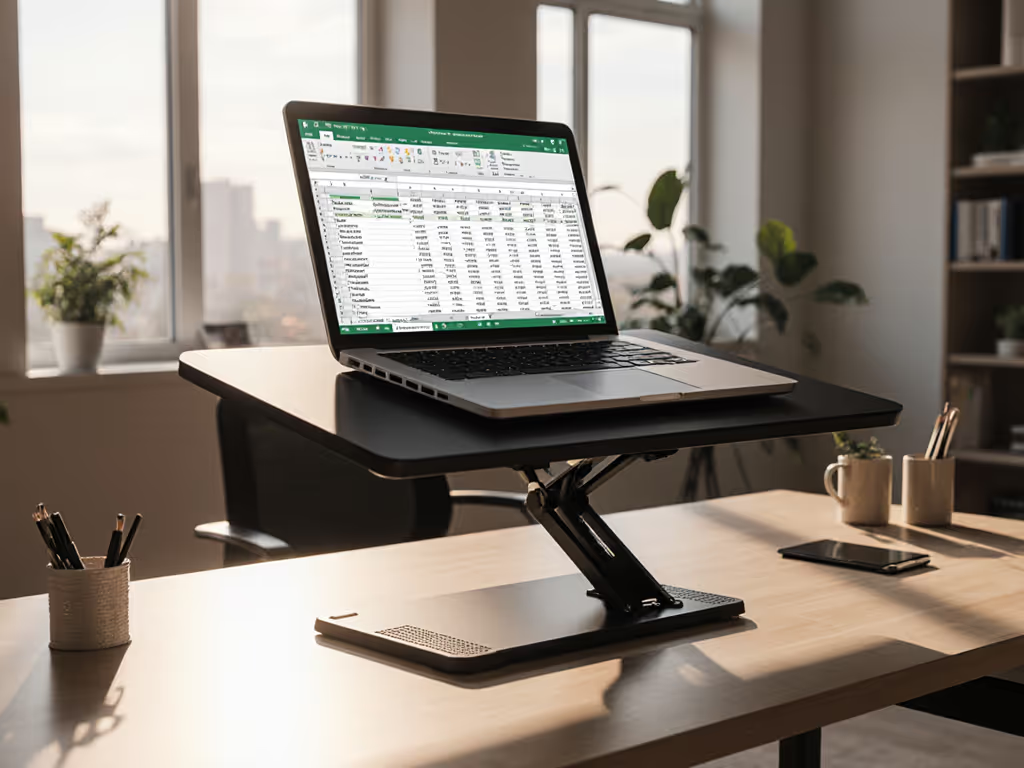
Adjustable Laptop Stands: Pick Right Without Guesswork
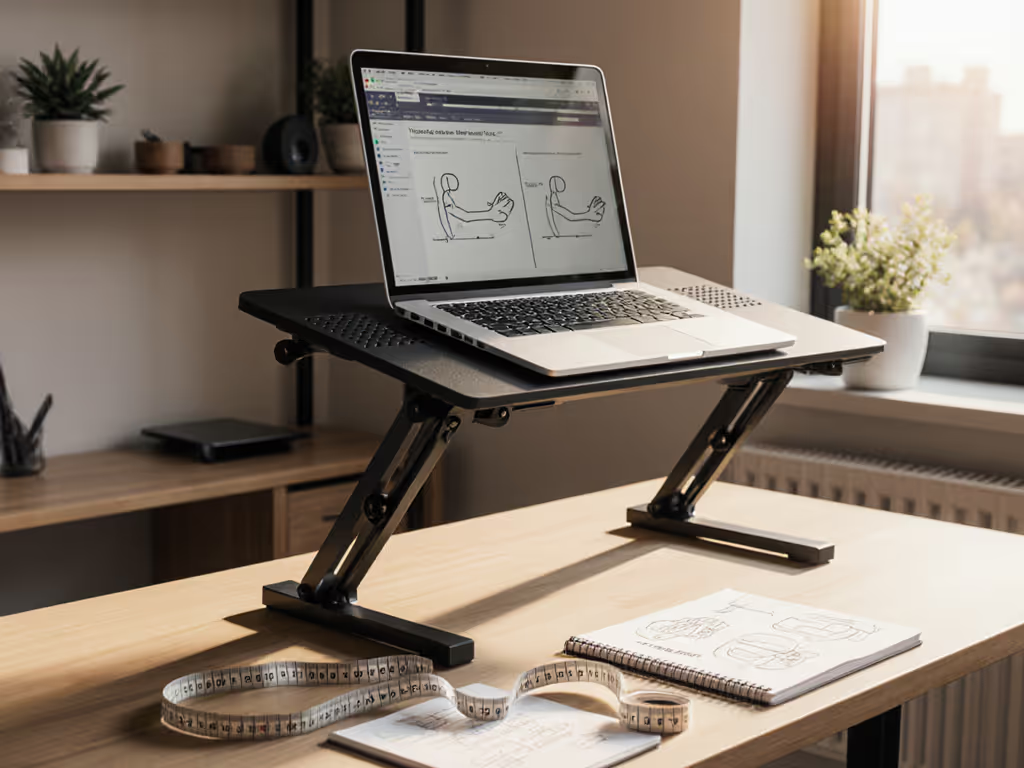
Let's cut through the noise: finding the right adjustable laptop desk stand isn't about trending colors or fancy specs, it's about matching your body and workspace with precision. The best height adjustable laptop stand for you hinges on three quick measurements you can grab in five minutes. Forget generic recommendations; when you start with your numbers, you unlock genuine ergonomic flexibility and avoid the all too common pain of returns or shoulder strain. That's how confidence starts, not with vibes, but with data.

Why Measurements Trump Marketing Hype
I once helped a teammate troubleshoot nagging shoulder pain. Instead of scrolling endless "best laptop stand" lists, we grabbed a tape measure and a borrowed textbook. Ten minutes later, she had a temporary fix using books, and the clarity to buy a stand that actually fit her desk and height. That's the power of starting with measurements, not vibes. Too many people buy stands based on vague promises like "ergonomic" or "universal fit", only to discover wobble, insufficient lift, or overheating issues. Your body doesn't care about marketing jargon, it needs precise alignment.
When you skip measurements, you risk:
- Neck strain from screens sitting 2-4 inches too low (a common culprit for headaches)
- Wrist extension forcing awkward typing angles on poorly adjusted stands
- Camera nightmares on video calls (no one wants an up-the-nose angle)
- Wasted money on stands that can't hit your personal "sweet spot"
The solution? Treat your workspace like a tailored suit. You wouldn't buy pants without measuring your inseam, so why gamble on your spine?
Your 3-Step Measurement Workflow (Under 5 Minutes)
Follow this sequence. Grab a tape measure, a blank notebook page, and your laptop. That's all you need. For precise formulas and examples to calculate your exact stand height, see our height calculation guide.
Step 1: Lock Down Your Eye Height (The Non-Negotiable Anchor)
Your eyes set the screen's minimum height. Everything else follows.
- Sit naturally in your work chair at your desk (wear your usual shoes)
- Place a ruler vertically against the wall beside you
- Look straight ahead (like you're focused on a screen)
- Mark the wall where your pupils hit the ruler
- Measure from floor to mark (e.g., 42")
Pro Tip: For standing desks, repeat this while standing before you buy a stand. Many adjustable stands max out at 10"-12" lift (insufficient if your natural eye height is 50"+).
Why this matters: If your screen top sits below eye level, your neck bends forward. Just 15° of flexion doubles spinal load (per Cornell University ergonomics studies). An ideal height adjustable laptop stand must lift your screen so the top third aligns with your eye line, no exceptions.
Step 2: Measure Your Desk & Laptop in One Go
This reveals hidden compatibility traps.
- Measure desk height from floor to surface (e.g., 28")
- Place laptop on desk and measure total height from desk to top of screen (e.g., 1.5")
- Subtract screen height from your eye height (e.g., 42" - 1.5" = 40.5")
- Calculate required lift: 40.5" - desk height (28") = 12.5" needed
Critical nuance: If your desk is shallow (<22" deep), avoid stands with wide bases that creep over the edge. And if your laptop is heavy (15"+ gaming rigs), demand weight ratings above your device (don't trust "up to 17"" claims).
Step 3: Find Your Personal Comfort Range
This is where most reviews fail you. A stand's advertised height range (e.g., 2"-10") means nothing if your sweet spot is 8.5"-9.2". Here's how to define yours:
- Test temporary setups: Stack books under your laptop. Type for 60 seconds at each height.
- Identify your "Goldilocks Zone": The narrow range where:
- Your neck stays neutral (no chin tuck)
- Your elbows rest at 90° when typing
- Your camera frames your eyes, not your forehead
- Note the min/max lift (e.g., "I need 8.7"-9.3" of lift")
Remember: workspace customization isn't about maximum adjustability, it's about precision within your unique range. A stand with 2"-15" lift is useless if it can't lock solidly at 9".
Translating Numbers to Stand Features (No Guesswork)
Now, use your measurements to evaluate stands objectively. Forget "best laptop stand" roundups, ask:
Does It Match Your Comfort Range?
- Red flag: Stands with fixed notches (e.g., 3", 6", 9"). If your sweet spot is 8.8", you'll strain daily.
- Green light: Micro-adjustable hinges (like gas springs or infinite-angle arms) that let you dial in exact heights. Seek stands with wide comfort ranges within your personal zone, these are your ultimate quick wins for all-day comfort.
Will It Handle Your Real-World Use?
| Pain Point | Measurement-Driven Fix |
|---|---|
| Wobble when typing | Require stands with base width ≥70% of your desk depth |
| Overheating | Demand open-grid trays (min. 30% surface ventilation) |
| Travel needs | Folded thickness ≤1" if carrying daily |
| Shallow desks | Overall footprint <18" deep for corner setups |
For example: A 15" MacBook Pro + external keyboard typically needs ≥10" lift for neutral wrists. If your calculation showed 11" needed, skip stands maxing at 10" (even if reviewers call them "great for Apple users").
Stability Check: The 10-Second Test
Before buying, verify stability with your laptop:
- Search reviews for "typing wobble" + your laptop size
- Look for: Rubberized grips (not tiny feet), base weight >1.5x laptop weight
- Avoid: Stands where height adjustments require removing your laptop (this kills workflow). You should adjust on the fly.
Pro Insight: Tall users (>6'2") need ≥12" lift on standard desks. Petite users (<5'3") often require stands hitting 6"-7" minimum. Most "one-size" stands fail these groups. Measure first!
Making Your Choice: Action Over Analysis Paralysis
You've got your numbers. Now filter stands efficiently:
- Eliminate mismatches immediately: If max lift < your required lift, skip it. No exceptions.
- Prioritize adjustability within your range: 0.5" increments beat notched stands.
- Verify cooling for heavy workloads: Open trays > solid metal bases if you edit video or code.
For hybrid workers: If you travel weekly, fold-flat stands under 1.5 lbs beat heavier "premium" options. Home-office users? Prioritize rock-solid stability over portability. Office setup options must align with your reality, not a reviewer's.
Remember my teammate's story? Her measurements revealed she needed exactly 8.3" of lift. She bypassed "best laptop stand" lists and bought a simple hinge-based model. No returns. No shoulder pain. Just confidence from numbers.
Your Actionable Next Step
Don't overthink it. This week:
- Grab your tape measure right now (yes, before finishing this article)
- Complete all 3 steps (takes 4 minutes, I timed it)
- Write your comfort range on a sticky note: "I need "-" lift"
Post it beside your desk. When you shop, filter only for stands hitting that range. You'll skip 90% of mismatched options instantly. That's how ergonomic flexibility becomes reality, not hope.
Confidence isn't bought. It's measured. Your perfect adjustable laptop desk stand awaits the data only you can provide. Go collect those quick wins, your neck and wrists will thank you by Tuesday.

